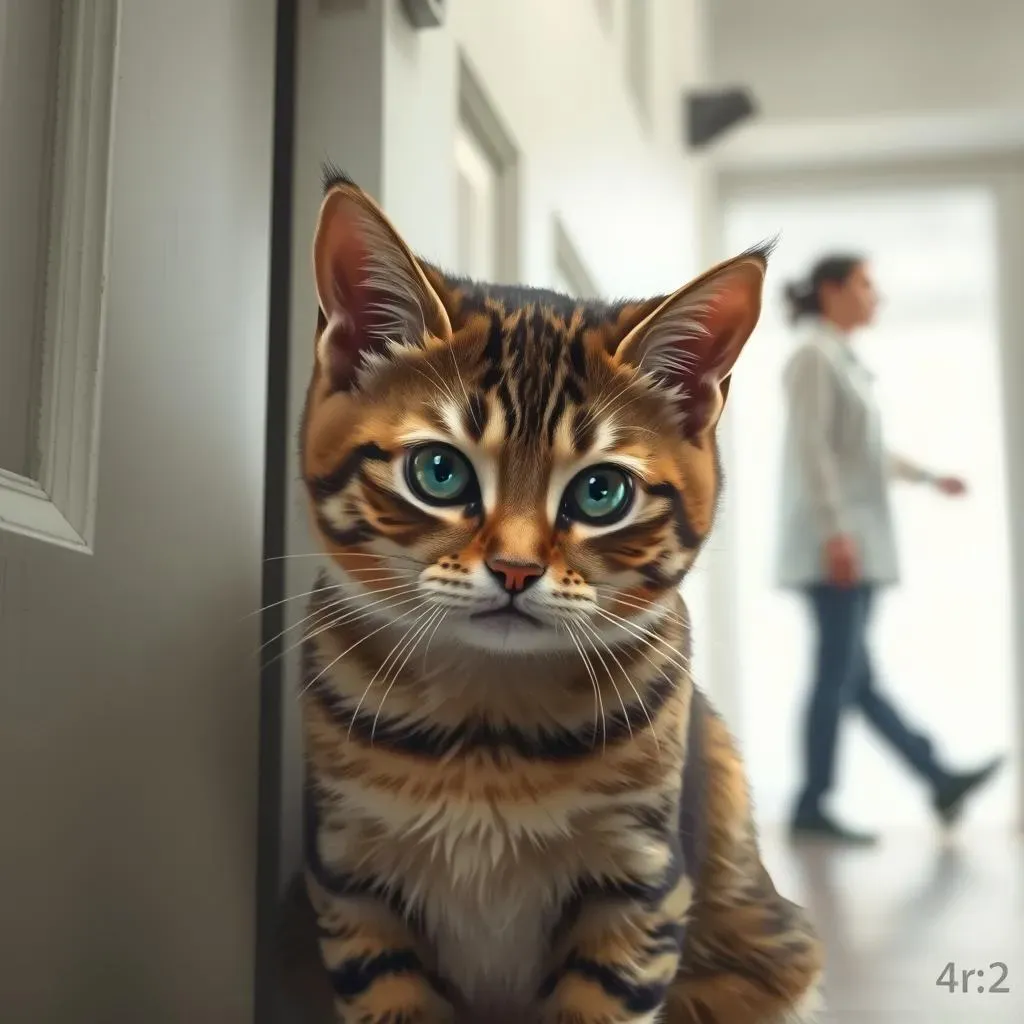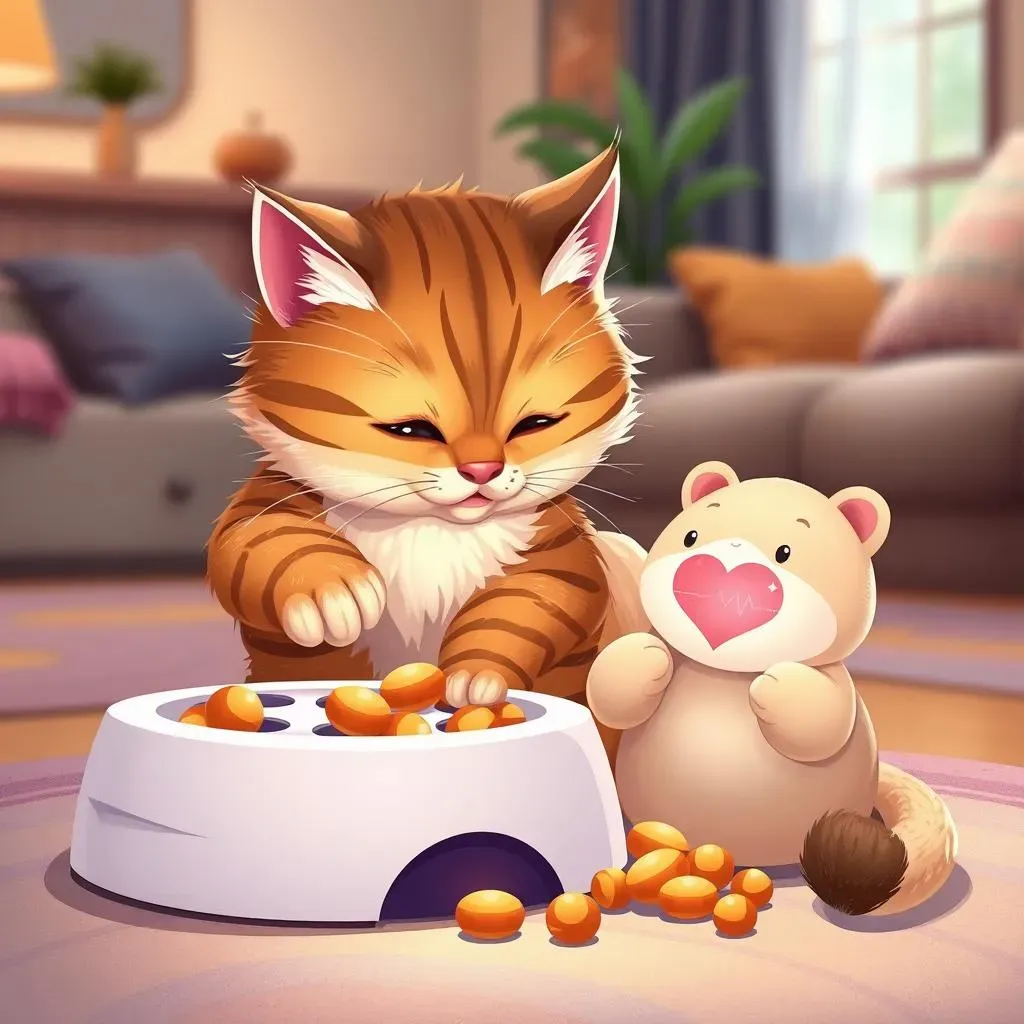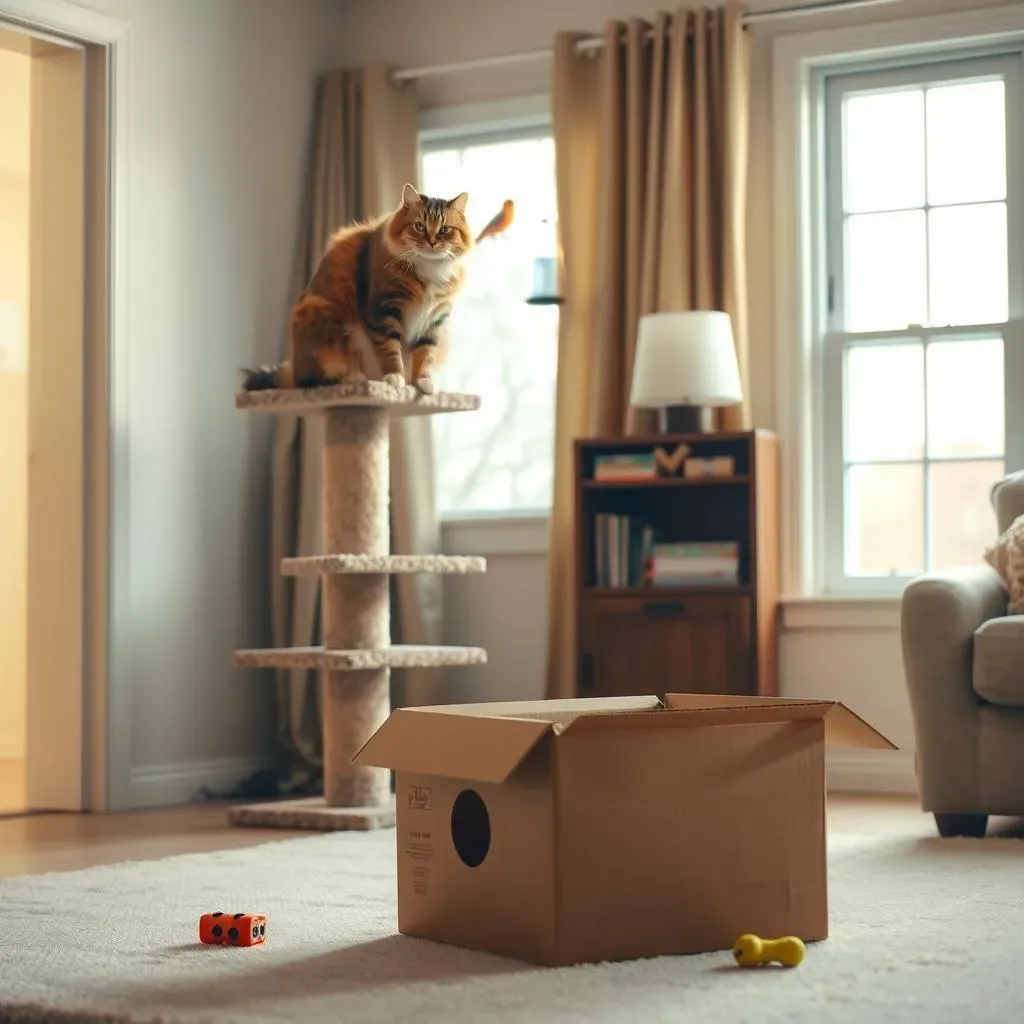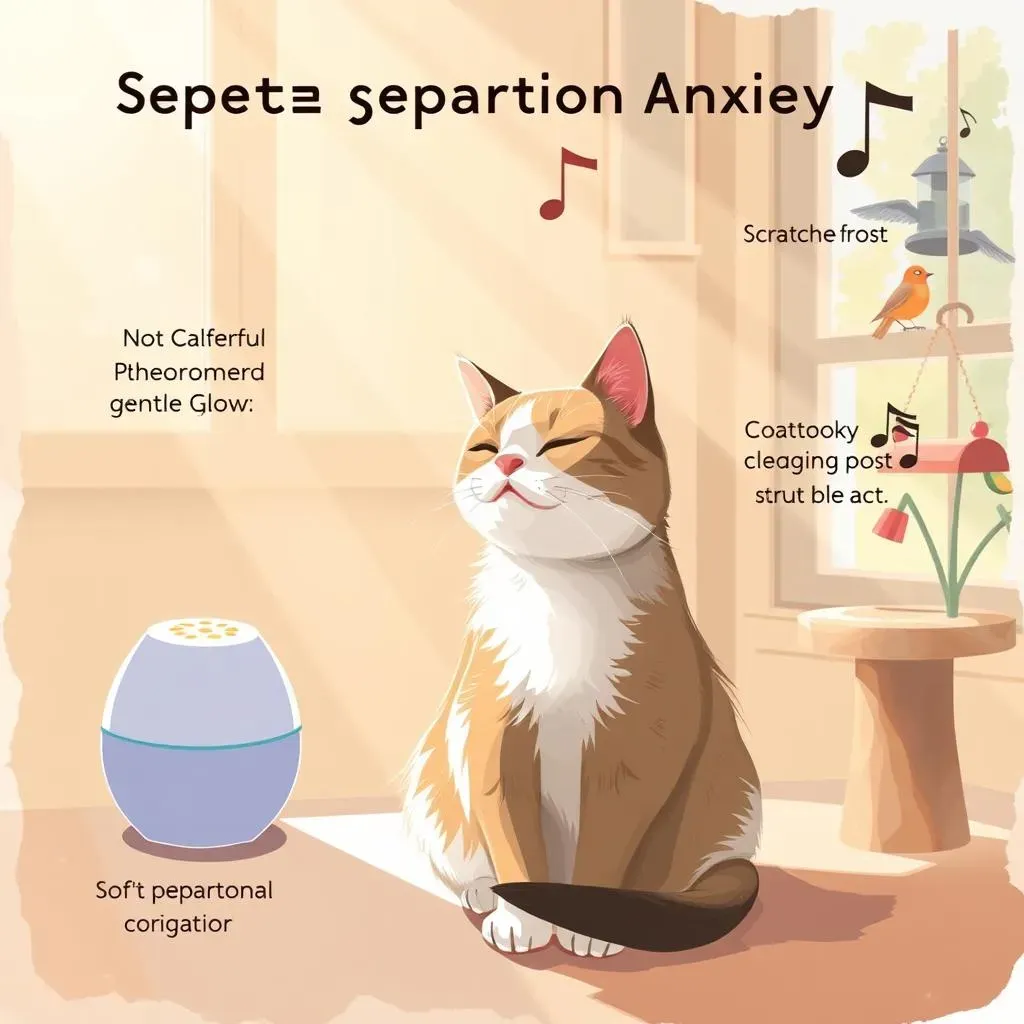Table of Contents
Leaving your feline friend at home can be tough, especially if they suffer from separation anxiety. Do you come home to shredded furniture, excessive meowing, or other signs of distress? You're not alone. Many cat owners grapple with this issue, and finding effective solutions is crucial for your cat's well-being and your peace of mind. The good news is that the best toys for cats with separation anxiety can make a significant difference. But which toys actually work? And how can you use them to create a more comforting environment for your kitty? This guide dives deep into understanding cat separation anxiety, identifying the telltale signs, and, most importantly, exploring a curated selection of toys designed to alleviate their stress. From interactive puzzles that keep their minds engaged to comforting plushies that mimic companionship, we'll cover a range of options to suit your cat's individual needs. Plus, we'll discuss how to combine these toys with other strategies to create a comprehensive plan for managing your cat's anxiety. Get ready to transform your cat's alone time from stressful to serene!
Understanding Cat Separation Anxiety: Spotting the Signs

Understanding Cat Separation Anxiety: Spotting the Signs
Decoding Feline Distress Signals
Cat separation anxiety isn't just a case of a clingy kitty; it's a genuine emotional response to being left alone. It's crucial to distinguish between normal feline independence and signs of distress. Think of it this way: a cat who occasionally meows when you leave is probably just saying "goodbye," but a cat who howls incessantly and destroys your doorframe is likely experiencing real anxiety. Recognizing these signals early can prevent the behavior from escalating and improve your cat's overall well-being.
Many symptoms can manifest, some subtle and others more obvious. It’s not always as simple as a sad meow. It could be a change in appetite, excessive grooming, or even avoiding the areas you frequent before leaving. Pay close attention to any shifts in your cat's behavior, especially around your departure times. Keep a journal if you have to – document when the behavior occurs, what precedes it, and how long it lasts. This information will be invaluable when consulting with your vet or a feline behaviorist.
Common Symptoms of Separation Anxiety in Cats
So, what exactly should you be looking for? Here's a breakdown of the most common signs of separation anxiety in cats:
- Excessive Vocalization: Constant meowing, howling, or crying when you're gone.
- Destructive Behavior: Scratching furniture, chewing on objects, or damaging doorways.
- Inappropriate Elimination: Urinating or defecating outside the litter box, especially on your belongings.
- Excessive Grooming: Over-grooming to the point of hair loss or skin irritation.
- Changes in Appetite: Refusing to eat or eating excessively when you're not home.
- Restlessness or Agitation: Pacing, inability to settle down, or constant vigilance near doors and windows.
- Vomiting: Some cats may vomit due to anxiety.
It's important to note that some of these behaviors can also be signs of other medical or behavioral issues, so it's always best to consult with your veterinarian to rule out any underlying health problems.
Top Toys to Alleviate Separation Anxiety in Cats

Top Toys to Alleviate Separation Anxiety in Cats
Interactive Puzzle Feeders: Mental Stimulation is Key
Think of puzzle feeders as boredom busters and anxiety reducers all in one. These aren't your typical food bowls; they require your cat to work for their kibble, stimulating their minds and keeping them occupied for extended periods. Imagine your cat, instead of pacing and meowing, is now intensely focused on figuring out how to release those tasty treats. That mental engagement can significantly reduce anxiety levels.
There's a huge variety available, from simple rollers that dispense treats as they're batted around to more complex puzzles that require sliding, flipping, or rotating different components. Start with an easy one and gradually increase the difficulty as your cat gets the hang of it. This keeps them challenged and prevents them from getting frustrated. Plus, it taps into their natural hunting instincts, providing a sense of accomplishment and satisfaction.
Comforting Plush Toys: A Source of Security
Some cats find solace in having a soft, cuddly companion when they're feeling anxious. Plush toys can provide that sense of security and comfort, especially if they mimic the warmth and heartbeat of another animal. Think of it as a surrogate friend that's always there for them, even when you're not.
Look for plush toys specifically designed for anxious pets. Some come with built-in heartbeat simulators or pockets for heat packs, providing extra comfort and reassurance. You can also try scenting the toy with your own smell by rubbing it against your skin or sleeping with it for a night. This will make it even more appealing to your cat and help them feel more connected to you, even when you're away.
Toy Type | Benefits | Considerations |
|---|---|---|
Puzzle Feeders | Mental stimulation, slows down eating, reduces boredom | Start with easy puzzles, clean regularly |
Heartbeat Plush Toys | Provides comfort and security, mimics companionship | Ensure safe materials, check battery life |
Catnip Toys | Entices play, reduces stress (in some cats) | Use in moderation, some cats don't react to catnip |
Creating a Safe and Stimulating Environment for Anxious Cats

Creating a Safe and Stimulating Environment for Anxious Cats
Creating a Territory of Their Own
Cats are territorial creatures, and a secure, predictable environment is essential for their well-being. When a cat feels safe in their surroundings, their anxiety levels naturally decrease. Think of it as building a feline fortress of solitude – a place where they can retreat and feel completely at ease. This isn't just about providing a bed; it's about creating a multi-faceted space that caters to their specific needs.
Start by ensuring your cat has access to multiple safe havens throughout your home. This could be a cozy cat bed in a quiet corner, a high perch overlooking their territory, or even a cardboard box lined with a soft blanket. The key is to offer variety and allow your cat to choose the spot that makes them feel most comfortable at any given time. Make sure these spaces are easily accessible and free from disturbances. No loud noises, no rambunctious kids, just pure feline tranquility.
Vertical Space: The Ultimate Anxiety Escape Route
Cats love to climb, and providing vertical space is a game-changer for anxious felines. High perches give them a sense of control and security, allowing them to survey their surroundings from a safe vantage point. It's like having their own personal lookout tower, where they can observe the world without feeling threatened. Plus, climbing is a great form of exercise and mental stimulation, which can further reduce anxiety.
Cat trees are an obvious choice, but you can also get creative with shelves, window perches, and even strategically placed furniture. The higher, the better! Just make sure the structures are sturdy and secure to prevent accidents. Place these vertical spaces near windows to provide your cat with a view of the outside world. Bird watching can be surprisingly therapeutic for anxious cats, offering a welcome distraction and a connection to their natural instincts.
Enrichment Activities: Boredom Busting for Anxious Minds
A bored cat is often an anxious cat. Providing plenty of enrichment activities is crucial for keeping their minds occupied and preventing them from dwelling on your absence. Think of it as giving them a job to do, a purpose to fulfill, even when you're not around. This isn't just about throwing a few toys on the floor; it's about creating a stimulating environment that engages their senses and encourages them to explore, play, and hunt.
Rotate toys regularly to keep things fresh and exciting. Introduce new textures, sounds, and smells to pique their interest. Consider hiding treats around the house to encourage foraging behavior. And don't underestimate the power of a simple cardboard box – cats love them! Cut holes in the sides, add some crinkled paper, and watch your cat transform into an intrepid explorer. The key is to provide variety and cater to your cat's individual preferences. Experiment with different activities until you find what they enjoy most.
Enrichment Activity | Benefits | Examples |
|---|---|---|
Puzzle Feeders | Mental stimulation, slows eating | Rollers, mazes, treat dispensers |
Vertical Space | Security, exercise, vantage point | Cat trees, shelves, window perches |
Interactive Toys | Physical activity, mental engagement | Wand toys, laser pointers, robotic mice |
Beyond Toys: Comprehensive Strategies for Cat Separation Anxiety

Beyond Toys: Comprehensive Strategies for Cat Separation Anxiety
While the best toys for cats with separation anxiety can certainly help, they're just one piece of the puzzle. Addressing separation anxiety comprehensively often requires a multi-pronged approach that goes beyond playtime. Think of it as building a support system for your cat, combining environmental enrichment with behavioral modification techniques and, in some cases, even medication. It's about creating a holistic plan that tackles the root causes of their anxiety and provides them with the tools they need to cope when you're not around.
Behavioral Modification Techniques: Retraining Your Cat's Mind
Behavioral modification is all about changing your cat's association with your departures. Instead of viewing your leaving as a negative event, you want them to see it as a neutral or even positive experience. This takes time, patience, and consistency, but the results can be incredibly rewarding. Start with gradual departures, leaving for just a few minutes at a time and slowly increasing the duration. This helps your cat get used to your absence without triggering their anxiety. When you return, avoid making a big fuss. Greet your cat calmly and casually, reinforcing the idea that your arrival is no big deal.
Counter-conditioning is another powerful technique. This involves associating your departures with something positive, such as a tasty treat or a fun toy. Just before you leave, give your cat their favorite snack or engage them in a short play session. This creates a positive association with your absence, making it less likely to trigger anxiety. You can also try creating a "safe word" or cue that signals your departure is imminent. This could be a specific phrase or action that you perform every time you leave. Over time, your cat will learn to associate this cue with a positive experience, such as receiving a treat.
Technique | Description | Example |
|---|---|---|
Gradual Departures | Slowly increasing the duration of your absences | Start with 5 minutes, then 10, then 15, etc. |
Counter-Conditioning | Associating departures with positive experiences | Giving a treat or toy before leaving |
Safe Word/Cue | Using a consistent signal before departures | Saying "I'll be back" and giving a treat |
Creating a Calming Atmosphere: Pheromones and Music
Did you know that you can use scents and sounds to create a more calming environment for your anxious cat? Feline pheromones, such as those found in diffusers and sprays, mimic the natural pheromones produced by cats, signaling safety and security. These pheromones can help reduce anxiety and promote relaxation, especially in unfamiliar or stressful situations. Place a diffuser in your cat's favorite room or spray a calming pheromone on their bedding or scratching post.
Music can also have a soothing effect on anxious cats. Classical music, specifically compositions with slow tempos and simple melodies, has been shown to reduce stress levels in felines. There are even specially designed playlists for cats available on streaming services like Spotify and YouTube. Experiment with different types of music to see what your cat responds to best. Avoid loud, jarring noises, which can exacerbate anxiety. Soft, gentle sounds are the key to creating a peaceful and calming atmosphere.
When to Seek Professional Help: Consulting with Your Vet or a Behaviorist
If your cat's separation anxiety is severe or doesn't improve with the strategies mentioned above, it's time to seek professional help. Your veterinarian can rule out any underlying medical conditions that may be contributing to your cat's anxiety and can recommend appropriate treatment options. In some cases, medication may be necessary to help manage your cat's anxiety. There are several anti-anxiety medications specifically designed for cats, and your veterinarian can help you determine if medication is the right choice for your feline friend.
A feline behaviorist can provide expert guidance on behavioral modification techniques and can help you develop a customized plan to address your cat's specific needs. Behaviorists use a variety of techniques, such as desensitization and counter-conditioning, to help cats overcome their anxiety. They can also identify any environmental factors that may be contributing to the problem and can recommend changes to your cat's environment to reduce stress. Don't hesitate to reach out for professional help if you're struggling to manage your cat's separation anxiety on your own. A qualified veterinarian or behaviorist can provide the support and guidance you need to help your cat live a happier, more relaxed life.
Conclusion: A Happy Cat, A Happy Home
Dealing with cat separation anxiety can feel overwhelming, but remember, you're not alone, and there are effective strategies to help your feline friend. By understanding the signs of anxiety, choosing the best toys for cats with separation anxiety, and creating a safe, stimulating environment, you can significantly reduce their stress levels. Don't hesitate to experiment with different toys and techniques to find what works best for your cat's unique personality and needs. And remember, patience and consistency are key. With a little love and the right tools, you can help your cat feel secure and content, even when you're not there, leading to a happier cat and a more peaceful home for both of you.